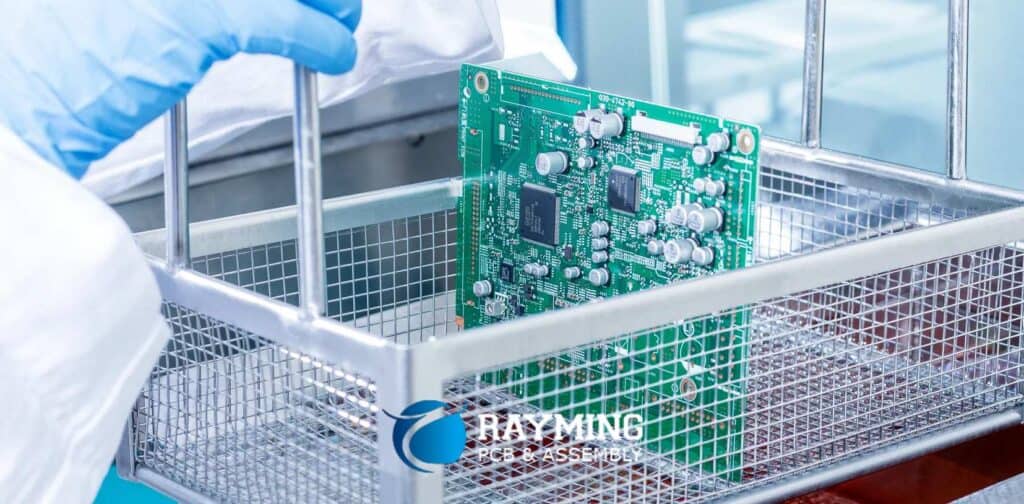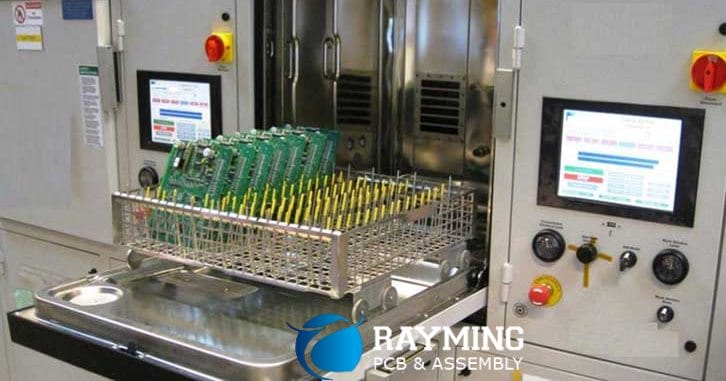In the world of printed circuit board (PCB) manufacturing and assembly, cleanliness is a critical factor that can significantly impact the reliability, performance, and longevity of electronic products. Contaminants such as flux residues, particulates, and other impurities can lead to various issues, including short circuits, corrosion, and premature failure of components. To address these concerns, industry organizations have developed PCB cleaning standards that provide guidelines and best practices for achieving and maintaining the desired level of cleanliness on PCBs.
Introduction
PCB cleaning is a crucial step in the manufacturing process, ensuring that the assembled boards are free from potentially harmful contaminants that could compromise their functionality or cause premature failure. The PCB cleaning standards establish a set of requirements, test methods, and acceptance criteria to ensure consistent and reliable cleaning processes across the electronics industry.
What are PCB Cleaning Standards?

PCB cleaning standards are comprehensive documents developed by industry organizations and consortiums to provide guidelines, specifications, and best practices for cleaning printed circuit boards during the manufacturing process. These standards aim to establish consistent and reliable cleaning procedures, ensuring that PCBs meet the required cleanliness levels for their intended applications.
The primary objectives of PCB cleaning standards are:
- Defining Cleanliness Requirements: PCB cleaning standards define the acceptable cleanliness levels for different types of electronic assemblies and applications. These requirements are based on factors such as the operating environment, component sensitivity, and reliability expectations.
- Establishing Test Methods: The standards specify various test methods and procedures for evaluating the cleanliness of PCBs. These methods include visual inspection, ionic contamination testing, and surface insulation resistance (SIR) testing, among others.
- Providing Guidelines for Cleaning Processes: PCB cleaning standards provide guidelines and recommendations for cleaning processes, including the types of cleaning agents, equipment, and techniques suitable for different materials and contaminants.
- Ensuring Consistency and Reproducibility: By establishing standardized procedures and acceptance criteria, PCB cleaning standards promote consistency and reproducibility in the cleaning processes across different manufacturing facilities and organizations.
- Promoting Best Practices: PCB cleaning standards serve as a reference for best practices in the industry, helping manufacturers and assemblers maintain high standards of quality and reliability.
Common PCB Cleaning Standards
Several industry organizations and consortiums have developed PCB cleaning standards widely adopted by electronics manufacturers worldwide. Here are some of the most commonly used standards:
IPC Standards
The IPC (Association Connecting Electronics Industries) is a leading industry association that develops standards for the electronics manufacturing industry. Some of the relevant IPC standards for PCB cleaning include:
- IPC-A-610: This standard provides acceptance criteria for electronic assemblies, including guidelines for the cleanliness and residue requirements.
- IPC-CH-65: The “Guidelines for Cleaning of Printed Boards and Assemblies” is a comprehensive standard that covers cleaning processes, materials, and test methods for evaluating cleanliness.
- IPC-TM-650: This is a collection of test methods for evaluating the cleanliness of PCBs, including ionic contamination testing, surface insulation resistance testing, and visual inspection criteria.
ROSE Standards
The ROSE (Residual Oxygen Screening for Efficacy) standards are developed by the EMPF (Electronics Manufacturing Process Facility) and are widely used in the electronics industry. The ROSE standards focus on evaluating the cleanliness of PCBs by measuring the residual oxygen levels after cleaning.
- ROSE-2005: This standard provides guidelines for measuring the residual oxygen levels on PCBs using a gas chromatography-based method.
- ROSE-2008: An updated version of the ROSE standard, incorporating improvements in testing methodologies and acceptance criteria.
MIL Standards
The MIL (Military) standards are developed by the United States Department of Defense and are widely used in the defense and aerospace industries. While not specifically focused on PCB cleaning, some MIL standards address cleanliness requirements and testing methods:
- MIL-STD-2000A: This standard provides general requirements for soldered electrical and electronic assemblies, including cleanliness criteria.
- MIL-STD-1246C: This standard covers the requirements for testing and evaluating the cleanliness of PCBs and assemblies using various test methods, such as ionic contamination testing and surface insulation resistance testing.
Other Standards
In addition to the above-mentioned standards, there are other industry-specific standards and guidelines that address PCB cleaning requirements. For example, the JEDEC (Joint Electron Device Engineering Council) standards provide guidelines for the handling and assembly of semiconductor devices, including cleanliness requirements for PCBs.
Importance of PCB Cleaning Standards

Adhering to PCB cleaning standards is crucial for ensuring the reliability and performance of electronic products. Here are some key reasons why PCB cleaning standards are important:
- Quality Assurance: PCB cleaning standards provide a framework for quality assurance, ensuring that PCBs meet the required cleanliness levels for their intended applications. This helps to minimize the risk of premature failures and performance issues.
- Consistency and Reproducibility: By following standardized procedures and acceptance criteria, manufacturers can achieve consistent and reproducible cleaning results across different facilities and production runs.
- Compliance and Certification: Many industries and applications require compliance with specific PCB cleaning standards as a prerequisite for product certification or qualification. Adherence to these standards is essential for meeting regulatory requirements and customer expectations.
- Process Optimization: PCB cleaning standards provide guidance on optimizing cleaning processes, including the selection of appropriate cleaning agents, equipment, and techniques based on the specific contaminants and materials involved.
- Industry Best Practices: PCB cleaning standards represent industry best practices, reflecting the collective knowledge and experience of experts in the field. Following these standards ensures that manufacturers are adopting proven and effective cleaning methodologies.
- Supplier and Customer Communication: PCB cleaning standards establish a common language and set of criteria for communicating cleanliness requirements and expectations between suppliers, manufacturers, and customers, facilitating effective collaboration and quality control.
PCB Cleaning Process Overview
While the specific cleaning processes may vary depending on the specific standard and application, the general steps involved in PCB cleaning typically include:
- Pre-cleaning Inspection: Visual inspection and testing (e.g., ionic contamination testing) to assess the initial cleanliness level and identify potential areas of concern.
- Cleaning Agent Selection: Choosing the appropriate cleaning agent based on the contaminants present, the materials used in the PCB assembly, and the cleaning process requirements.
- Cleaning Process: Applying the selected cleaning process, which may include techniques such as immersion cleaning, spray cleaning, or vapor degreasing, depending on the requirements and available equipment.
- Rinsing and Drying: Thoroughly rinsing the PCBs to remove any residual cleaning agents or contaminants, followed by a drying process to ensure complete removal of moisture.
- Post-cleaning Inspection and Testing: Conducting visual inspections and performing cleanliness tests (e.g., ionic contamination testing, surface insulation resistance testing) to verify that the PCBs meet the specified cleanliness requirements.
- Documentation and Traceability: Maintaining accurate records and documentation of the cleaning processes, inspection results, and test data to ensure traceability and compliance with the applicable standards.
Frequently Asked Questions (FAQs)
- Q: Are PCB cleaning standards mandatory or voluntary? A: While PCB cleaning standards are generally voluntary, many industries and applications require compliance with specific standards as a prerequisite for product certification or qualification. Adherence to these standards is essential for meeting regulatory requirements and customer expectations.
- Q: How are the cleanliness levels defined in PCB cleaning standards? A: PCB cleaning standards typically define cleanliness levels based on factors such as ionic contamination levels, surface insulation resistance values, and visual inspection criteria. These levels are established based on the sensitivity and reliability requirements of different types of electronic assemblies and applications.
- Q: Can different cleaning processes be used as long as they meet the cleanliness requirements specified in the standards? A: Yes, PCB cleaning standards generally allow for the use of different cleaning processes and techniques, as long as the resulting cleanliness levels meet the specified requirements. The standards provide guidelines and recommendations on suitable cleaning processes and materials, but manufacturers have flexibility in choosing the most appropriate methods for their specific needs.
- Q: Do PCB cleaning standards cover only the cleaning process, or do they also address other aspects of PCB manufacturing and assembly? A: While the primary focus of PCB cleaning standards is on the cleaning processes and cleanliness requirements, some standards also provide guidelines and best practices for other aspects of PCB manufacturing and assembly, such as soldering, handling, and packaging.
- Q: How often are PCB cleaning standards updated or revised? A: PCB cleaning standards are periodically reviewed and updated by the respective industry organizations and consortiums to reflect the latest advancements, technologies, and best practices in the field. The revision cycles may vary depending on the specific standard, but updates typically occur every few years to ensure the standards remain relevant and up-to-date.
PCB cleaning standards play a crucial role in ensuring the reliability and performance of electronic products by establishing consistent and reproducible cleaning processes across the industry. By adhering to these standards, manufacturers can minimize the risk of premature failures, meet regulatory and customer requirements, and maintain high levels of quality and consistency in their products. As the electronics industry continues to evolve, PCB cleaning standards will remain essential tools for maintaining the highest standards of cleanliness and promoting best practices in PCB manufacturing and assembly.



0 Comments